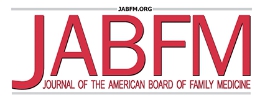Ji Eun Chang; Zoe Lindenfeld; Stephanie L. Albert; Rachel Massar; Donna Shelley; Lorraine Kwok; Kayla Fennelly; Carolyn A. Berry
Corresponding Author: Ji Eun Chang; Department of Public Health Policy and Management - New York University School of Global Public Health. Email: ji.chang@nyu.edu
Section: Original Research
Publication: 11/11/2021
Objective: To review the frequency as well as the pros and cons of telephone and video-enabled telemedicine during the first nine months of the COVID-19 pandemic as experienced by safety net providers across New York State (NYS). Methods: Analysis of visits to 36 community health centers (CHCs) in NYS by modality (phone vs. video) from February to November 2020. Semi-structured interviews with 25 primary care, behavioral health, and pediatric providers from 8 CHCs. Findings: In the week following the NYS stay-at-home order, video and phone visits rose from 3.4 and 0 percent of total visits to 14.9 and 22.3 percent. At its peak, more than 60 percent of visits were conducted via telemedicine (April 2020) before tapering off to about 30 percent of visits (August 2020). Providers expressed a strong preference for video visits, particularly for situations when visual assessments were needed. Yet, more visits were conducted over phone than video at all points throughout the pandemic. Video-specific advantages included enhanced ability to engage patients and use of visual cues to get a comprehensive look into the patient’s life including social supports, hygiene, and medication adherence. Telephone presented unique benefits including greater privacy, feasibility, and ease of use that make it critical to engage with key populations and as a back-up for when video was not an option. Conclusions: Despite challenges, providers reported positive experiences delivering care remotely using both telephone and video during the COVID-19 pandemic, and believe both modalities are critical for enabling access to care in the safety net.

